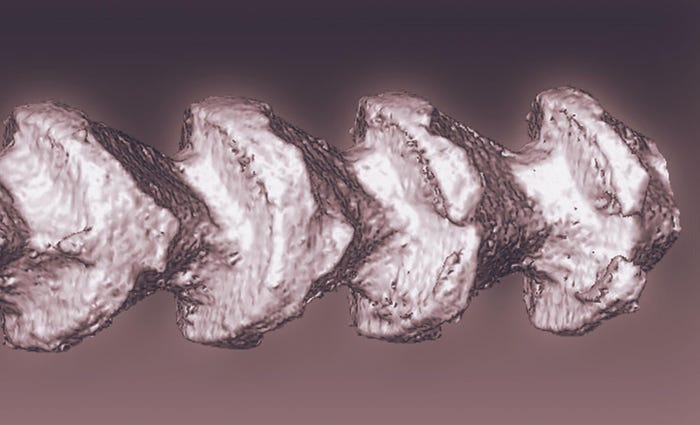Bone-Inspired Silicon Shapes Could Boost Biocompatibility of Implants
July 10, 2015
|
Tiny silicon spicules could one day improve the integration between implantable electronics and their recipient.
Kristopher Sturgis
Minute bone-like silicon shapes could one day provide a bridge between soft tissue and hard materials, according to a University of Chicago (UC) news release.
"Our skeleton-like silicon spicules show great potential in a wide range of applications where enhanced electronics-biology interface is desired," according to Bozhi Tian, assistant professor in chemistry at the university.
UC researchers were the first to fashion bone-inspired synthetic materials using chemical processes, Tian said.
The team used "a pressure modulation synthesis in the metal-catalyzed vapor-liquid-solid process to encode gold-based patterns of silicon," Tian said. They were able to create the spicules strictly from chemical processes through the method of 3-D lithography; current lithographic techniques can only create features over flat surfaces.
Tian noted that gold is able to deposit and diffuse along silicon surfaces and show pronounced facet-dependence, adding that the team still has yet to demonstrate that the materials can offer electrical stimulation and sensing, Tian said.
Strong mechanical interactions could potentially assist in achieving tight integration of semiconductor-based medical devices--like silicon probes that record brain activities--with biological components. Biocompatibility has presented a significant challenge for brain probes used for long term use.
Tian says he and his research partners are presently testing the silicon spicules inside neural tissues, as they are interested in low power electrical stimulation. "We are also trying to fabricate an implantable device from these silicon spicules, and are planning to test them in vivo, but it may take another five to 10 years before this technology can be used."
Tian went on to say that these tiny silicon shapes could also provide a novel mechanism for tissue anchorage, which could offer great potentials for building tight junctions with other soft systems in tissue-interfacing adhesives, or implant bioelectronics. It is something he hopes his team can demonstrate after testing the electrical performance of the spicules under physiological conditions.
Refresh your medical device industry knowledge at MEDevice San Diego, September 1-2, 2015. |
Kristopher Sturgis is a contributor to Qmed and MPMN.
Like what you're reading? Subscribe to our daily e-newsletter.
About the Author(s)
You May Also Like


.png?width=300&auto=webp&quality=80&disable=upscale)
